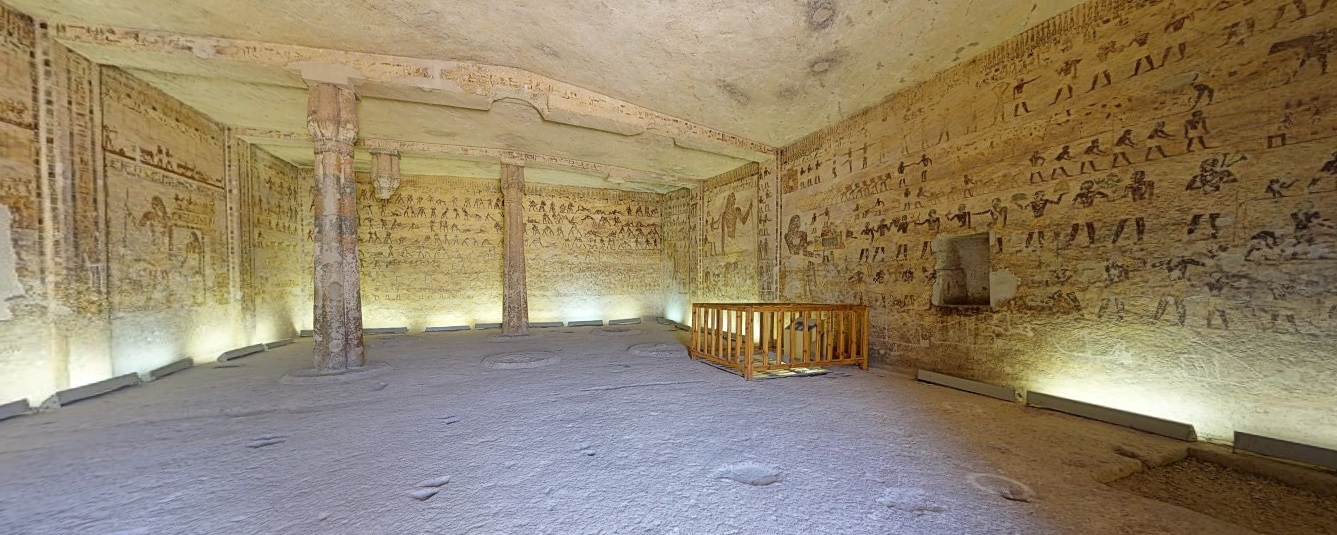IL Minya
EL Miniya
A historical masterpiece, illustrated through the evolution of ancient civilizations has
produced one of Egypt's most remarkable destinations. The city of EL-Miniya is
without doubt could be called Thebes (Luxor) of Middle Egypt, only 240 KM south
of Cairo. It is in many ways Egypt's geographical and historical nucleus, stretching
out along the river Nile. Historically the city was Egypt's capital during the reign of
the monotheist king "Akhnaten" around 1350 BC, for about 17 years Akhet-Aten
(meaning the horizon of Aten) or modern day Tell-EL-Amarna was the center of
Egypt's political life.
Having been a region of significance during the Pharaonic period, it continued during
the Greco – Roman period down to the early Islamic period. It offers its visitors with
unique selection of Pharaonic, Greco Roman, Christian and Islamic Monuments, from
Temples, tombs, ruins of Palaces and cities, Churches and mosques, in addition to
various museums containing magnificent statues, and elaborate paintings that
survived to this day. Accommodation in the city is not so much in number of hotels
but there are couple of good establishments fairly enough to the number of visitors to
this stunning City which is rich with so many archeological sites; each is a city in
itself, as follows:
What to see:
Beni Hasan
After the fall of the central government in Memphis, at the end of the Old Kingdom,
various provinces developed self-rule and acted independently, provincial nomarchs,
ruled as mini-kings from their respective provinces, building for themselves, elaborate
tombs cut into the rock, full with paintings showing them as Masters of the land. The
series of Rock-cut tombs at Beni Hasan in Miniya (Middle Egypt) is an elegant
example of a cemetery belonging (in part) to a ruling house of nomarchs who ruled
(OXYRINKHOS – The Oryx Nome which was the 16 th Upper Egyptian Nome.
Contrary to Egyptian traditional tombs of the Mastaba-Style (Mastaba means bench in
Arabic), the tombs of Beni Hasan were cut on cliff-side sloping downwards the edge
of the eastern bank of the Nile, since the province had no territory on the west bank.
The spacious tombs are well of high quality paintings, focusing on various sports
practiced by youngsters, particularly the wrestling scenes produced in series of
wrestling poses.
Ashmonien and Tuna EL-Gabal
Ashmonien was the old Greek city of Hermopolis, the cult center of the baboon/and
Ibis-Headed god "Thoth" of writing, and wisdom in ancient Egypt, its ancient name
was "Khemenu" meaning the number eight-in the ancient Egyptian language/ this
number refers to the ogdoad of gods, who according to the local tradition were
responsible for the world's creation. Of special note at Tuna EL-Gabal, the necropolis
of the ancient city is the Ibis catacombs and the tomb of Petosiris, the oldest and the
most important, belongs to a high priest of god "Thoth". He must have been a very
distinguished personality in his time, the reign of "Philip Arehidaeus – the half-
brother of Alexander the Great" and Ptolemy I (ca. 300 BC). Judging by his
inscriptions, he had led an ideal life, in priestly devotion, and had achieved the highest
distinctions in the cult of the god.
Akhet-Aten / or present day Tell EL-Amarna
At the peak of the ancient Egyptian Empire, extending from the Euphrates at the north
to the fourth Cataract in the modern-day Sudan at the south, due to successful military
campaigns, particularly of King Thuthmosis III, resulting that Egypt became the most
rich and powerful country in the known world then, during this time, king Amenhotep
III sat on the throne of Egypt, his elder son called "Thuthmosis" died prematurely,
leaving the inheritor, another son, named after his father, Amenhotep IV, who without
doubt, later on to be called Akhnaten, was one of the most famous kings of ancient
Egypt, a reformer, who during his 17 years reign, introduced monotheism and
revolutionized religious thought, art and social order.
Apart from the change of his name from Amenhotep to Akhnaten, and adopting the
worship of a new god, his major act was the transfer of the capital from Thebes
(Luxor) to the newly established (Akhet Aten, meaning the horizon of Aten "The
Physical sun-disk" / the present day Tell EL-Amarna). The short-lived Akhet-Aten
was conceived as the cult-center of Aten/or Aton, Akhnaten's god represented in the
form of the physical sun-disk, sending rays terminating in human hands. The city
extended almost entirely, on the east bank of the Nile. It was here in Amarna/Akhet
Aten, with his beloved consort "Nefertiti" and their six daughters, that He spent
almost his reign. It was here, too, that the future king "Tut Ankh Amen" was born and
spent his early years.
Within only two years, the new city was built and decorated to become the hub of
culture and promising cult center, defined by 14 large border-slabs (rock cut stelae),
which in fact relate the circumstances of the founding of the city.
International teams of specialists flocked since the end of the 19 th century to unveil the
secrets of the lost city, temples as well as royal palaces (in ruins) were discovered,
showing how the great palace was connected to the main temple across the main street
by means of a bridge.
The archive room of the palace yielded a large quantity of baked-clay tablets bearing
inscriptions in Akkadian language, written in the so called cuneiform script, proved to
be the royal correspondence, dating from the days of Akhnaten's father (Amenhotep
III) and Akhnaten himself, containing letters of the ancient near-east monarchs
dealing with international affairs.
The royal tomb was severely damaged, and according to a famous Egyptologist
recently investigated it, he confirmed the words previously said, that the tomb had
been intentionally destroyed as had all the monuments in Amarna.




